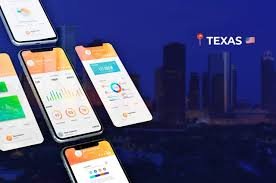
Only apps that undergo rigorously planned and well-executed engineering phases become the apple of people’s eyes. Both iOS and Android ecosystems are vast and have so much saturation that only apps with sturdily built codebases and unique ideas come to the surface and are embraced by users. Poorly built apps don’t live up to users’ expectations and are instantly abandoned by them.
This article will dive comprehensively into the four key phases that set the trajectory of the success of your app, from ideation to design and development to QA and testing to deployment. We will discuss the constitution of these phases that are in the fabric of companies offering mobile app development services so you employ the industry-recognized tools and implement top tactics and strategies.
So, without further ado, let us unravel those four key app development phases that define the success of your app.
4 Key Phases of App Development
These are four key phases of app development that need to be executed strategically and nuanced approach.
Ideation and Validation
Today, there is an app for almost everything, and discerning a unique selling point has become hard. First, find the gap in the market and do rigorous research about it to ensure if it really needed. If your idea is not well-researched and you don’t adopt a strategic approach, your app will be just another addition to the deluge of app stores, and all the resources and time put into it will be wasted, and such poor ideation and brainstorming will be detrimental to your app’s success.
Once you have narrowed down an idea for your app, now comes the time to do validation. You can dig into the market through different tools and strategies and validate that your app is really needed. Work in deep and detail in the market you are targeting and see if you will be able to find your target audience.
Now, when the idea is confirmed, open the canvas and start outlining the features and functionalities your app would have, what the app would look like, and what your ideal user’s journey would be. Decide the platform you will be building the app for and what resources you would require.
One important aspect that is better to figure out before you start doing anything tangible is monetization mode, which will help you make your app sustainable, and your app will not eat into your budget much. Would it be ads? Or in-app purchase, or would it be subscription tiers? It would be prudent of you to determine that prior to coding your app otherwise, later, you will mess up trying different revenue models.
Design and Mockups
Once everything in the abstraction phase is executed as planned, now comes the time to employ industry standard tools and design what the app is going to look like. Before coding your app, you have to create the visuals with the alignment of your app identity and brand voice. During the design process, take care to adhere to design principles and ensure you craft a design that is visually appealing to users and intuitive. Keep the design decluttered and simple while ensuring it looks elegant and users can easily interact with it.
Remember, your development and coding phases will be entirely based on the design you create. To keep the layers and weaves of the app fully in alignment with your goals, create wireframes so you can define the user journey, and you will have a better idea of the next layer elements to interact with. This will help you create a meaningful and seamless user journey.
Coding and Development
This phase is integral to your app’s success. The better you execute this phase, the better and more seamless your app will be. Based on the platform you choose to create for, delineate the best, latest, and greatest technologies for coding your app.
Start coding the outline and features you had outlined in the initial stage, and try to ensure you use fewer lines of code without trading off functionality and features in your app. This will help you optimize your app later in the optimization phase.
Adopt the iterative approach and keep refining your app until you don’t come down to the best version of your app. Once your app is developed, start scrutinizing each of the layers of your app and check it under tough conditions to ensure that a specific layer is not becoming a performance bottleneck.
Here are the top code optimization practices for ensuring a high-performing and scalable
- Algorithmic Optimization
- Code Profiling and Analysis
- Memory Management
- Parallelism and Concurrency
- Optimized Loops and Iterations
- Caching Strategies
- Compiler Optimizations
- Reduce I/O Operations
- Avoid Global Variables
- Code Review and Collaboration
- Use Efficient Libraries and Frameworks
- Testing and Benchmarking
- Continuous Monitoring
- Hardware Considerations
- Documentation and Maintainability
If you lack resources capable of coding a stellar foundation for your app, there are gazillions of companies offering Custom android app development services; research well and hand over this phase to a company.
Testing and Deployment
Testing and deployment are essential stages in app development, involving two of the four pivotal phases in the procedure. Once the development stage is finished, testing guarantees that the app works accurately with any slowdowns and helps you surpass user expectations.
This includes a complete analysis of different aspects such as functionality, usability, performance, security, and consistency across various devices and platforms. Testing supports identifying and fixing any bugs, glitches, or conflicts before the app is worked, thereby improving its quality and user experience.
Deployment, on the other hand, results in making the app accessible to users. This stage includes activities like arranging the app for release, building servers, setting up databases, and using security measures. Depending on the platform, deployment may include offering the app to app stores or releasing it on web servers. It is crucial to follow the best ways and guidelines offered by the respective platforms to guarantee an easy deployment process. Testing and deployment are repeated processes that may involve multiple repetitions to achieve expected outcomes.
Conclusion
If you strategize well and understand the weaves of the development process to the full, you will eventually have an app that performs well on the Android and iOS ecosystems. If you are a business person looking to make money out of mobile apps, even then, you need to be strategic in selecting the right mobile app development services. Always keep in mind hundreds of apps are released in a year, but 90% of them don’t even reach close to the business goals, and the reason is the dull and bland execution that their owners do in a bid to reap the rewards through monetization.



